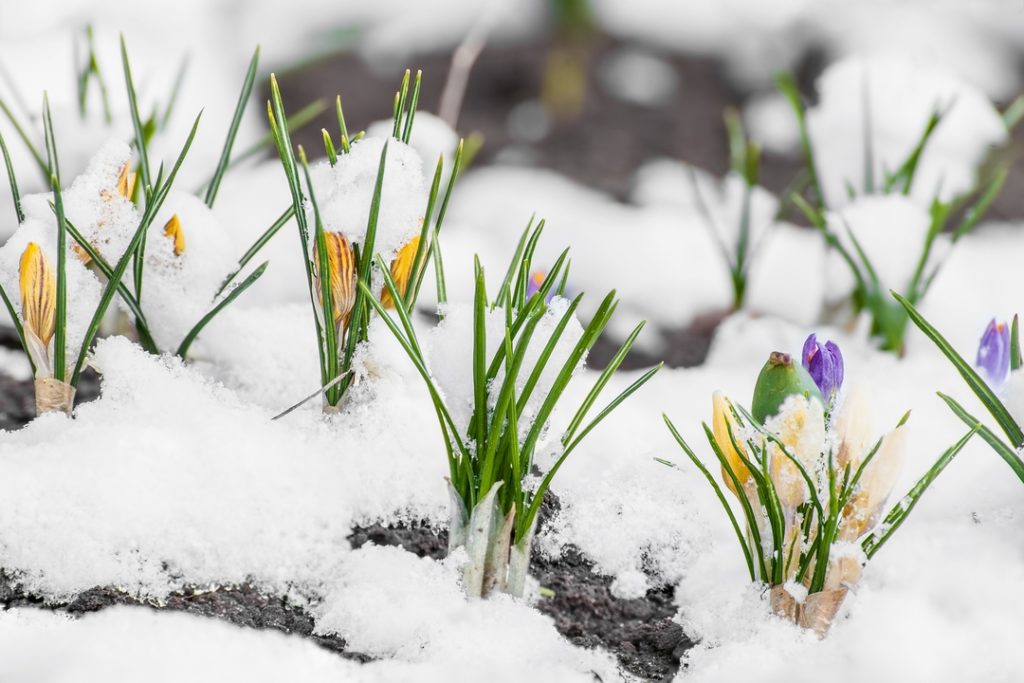
There is little you can do when the first frost hits your front lawn and starts doing some major damage. This condition is called winterkill and it refers to the damage that the winter weather can do to your grass with an ice cover, blanket of snow covering the turf (which can cause different kinds of mold or mouse activity), and the winter winds can do serious damage to bare spots of the lawn.
So how do you keep this seasonal damage to a minimum? You don’t necessarily have to start clearing snow and ice off your lawn during the mid-winter months (though it might not be a bad idea).
1 – Re-sodding the lawn

Depending on the severity of your lawn, you may want to consider re-sodding your lawn. People generally hire labor work to sod the lawn for them, but if you feel up to doing the work yourself and you don’t mind going out of pocket for the sod plots, then here are a few steps on how to get that done.
First, clear out all the old grass and assess how much thatch you have to work with. Then, set up a rotary tiller and outfit yourself with safety equipment to get the job done quickly and safely. Next, till the area to sift through the soil and bring richer soil to the top and rake the plot afterward to remove dirt clods and clumps of old grass (old grass should especially be removed so that it doesn’t rot underneath the new grass and create brown spots).
Afterwards, spray water evenly over the soil to moisten it before laying the sod down. This is followed by laying the sod down in offset strips while keeping the strips moist all the way through. Your final step will involve rolling the sod roller over the strips that you place down. This may seem like a lot of work on the face of it, but other techniques may be a bit more complicated when it comes to stopping Jack Frost from damaging your grass.
2 – Reseeding the Lawn

It might not be the most fun you have on your front lawn, but reseeding can effectively stop winterkill from destroying your lawn. Dethatching and thoroughly aerating should help the process go smoothly. The lawn will need a lot of watering, especially after the seedlings sprout through. The dead spots should fade out and the grasslings will be able to grow over it. Many people tend to overseed their lawns so that they can effectively fill the dead gaps on your lawn left by winterkill.
3 – Slow-Release Fertilizer

The grass may not be completely dead, it might just be terribly damaged. Some lawn experts advocate using a slow-release fertilizer to boost the growth of the grass saplings underneath the weather-beaten lawn. The benefit of the slow-release fertilizer is that it is coated with a nutrient-rich water soluble coating that helps bolster the new growth of the Spring season’s grass and bring it forward. They also tend to last six to eight weeks longer than most other kinds of fertilizers and will give the lawn a more uniform growth. On top of all that, they are also less likely to cause plant burning on certain parts of the lawn.
If you want to go the all-natural route, there’s organic slow-release fertilizer that soaks into the soil and takes longer to seep into the plants. Some of the drawbacks to slow-release fertilizers is that they can be pretty pricey and the nutrients take longer to reach the plants.
4 – Fight Vole Damage

Not a lot of people think about voles when they think of voles when they think about hazards to their lawn. The vole is a type of rodent that is very close to a mouse, but what separates the vole from other mammals is that not only does it not hibernate, but it doesn’t even become sluggish or slow – it’s just as spry as any other season. For the most part, voles will dig through people’s lawns to feed on grass, seeds, and other plants. Voles can also damage trees very badly by chipping away at the bark and roots. You won’t see the damage until the snow melts and you find surface tunnels twisting over the lawn’s surface, piles of dead grass, and other evidence of burrowing.
There are several lawn care methods to counteract vole damage: mowing your lawn well into the Fall may make the grass less attractive to local voles; remove vole cover or potential nesting materials like a pile of leaves, mulch, and tall grass; use plastic vegetation barriers to keep voles at bay; use wire fences around trees and bushes to keep voles away from tell vegetation. Voles are always going to be that one creature stirring during the winter time, so make sure you’re ready for them.
